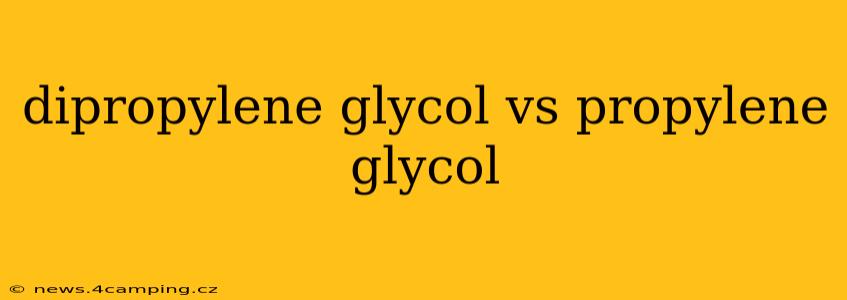Dipropylene glycol (DPG) and propylene glycol (PG) are both organic compounds frequently used in various industries, leading to common confusion about their differences. While both are colorless, nearly odorless, and viscous liquids, understanding their distinct properties and applications is crucial. This article will delve into the key distinctions between dipropylene glycol and propylene glycol, addressing common questions and highlighting their unique characteristics.
What is Dipropylene Glycol (DPG)?
Dipropylene glycol is a thicker, more viscous liquid than propylene glycol. It's produced by the dehydration of propylene glycol, resulting in a slightly different chemical structure. This structural difference leads to variations in its properties and, consequently, its applications. DPG is known for its excellent solvent properties, low toxicity, and high boiling point.
What is Propylene Glycol (PG)?
Propylene glycol is a clear, colorless, almost odorless liquid with a slightly sweet taste. It's widely used as a humectant, solvent, and preservative in various products. It boasts a lower viscosity compared to DPG and is readily soluble in water. Its applications span a wide range, from food and cosmetics to antifreeze and pharmaceuticals.
What are the Key Differences Between Dipropylene Glycol and Propylene Glycol?
The primary differences between DPG and PG lie in their viscosity, hygroscopicity (ability to absorb moisture), and toxicity levels. While both are considered relatively safe, subtle variations exist:
| Feature | Dipropylene Glycol (DPG) | Propylene Glycol (PG) |
|---|---|---|
| Viscosity | Higher | Lower |
| Hygroscopicity | Lower | Higher |
| Boiling Point | Higher | Lower |
| Toxicity | Considered relatively safe, but less extensively studied than PG | Generally recognized as safe (GRAS) by the FDA for food use |
| Applications | Solvents, plasticizers, humectants in cosmetics | Food additive, antifreeze, cosmetics, pharmaceuticals |
What are the main applications of Dipropylene Glycol?
DPG's higher viscosity and lower hygroscopicity make it suitable for applications requiring a thicker, less moisture-absorbing liquid. This includes:
- Cosmetics and Personal Care Products: DPG acts as a solvent and humectant in lotions, creams, and other personal care products. Its lower hygroscopicity compared to PG can be beneficial in preventing products from becoming too runny or sticky.
- Plasticizers: DPG can improve the flexibility and workability of plastics and resins.
- Paints and Coatings: Its solvent properties make it useful in various paint and coating formulations.
- Hydraulic Fluids: In some specialized applications, its properties make it suitable for hydraulic fluids.
What are the main applications of Propylene Glycol?
The versatility of propylene glycol stems from its lower viscosity, high hygroscopicity, and broader regulatory acceptance:
- Food Industry: PG is used as a food additive, primarily as a humectant to retain moisture and enhance texture in foods.
- Pharmaceuticals: It serves as a solvent and carrier in various pharmaceutical formulations.
- Antifreeze: Its ability to lower the freezing point of water makes it a common component in antifreeze solutions.
- Cosmetics: It’s extensively used in cosmetics and personal care products as a solvent, humectant, and preservative.
Is Dipropylene Glycol safe?
Dipropylene glycol is generally considered safe for use in various applications when handled appropriately and used within the recommended concentrations. However, it's crucial to note that extensive research on its long-term effects is less abundant compared to propylene glycol. Always refer to the safety data sheet (SDS) for specific handling and safety information.
Is Propylene Glycol safe?
Propylene glycol has a long history of safe use in many applications. It's been granted Generally Recognized as Safe (GRAS) status by the FDA for food use. However, like any chemical, individual sensitivities can exist. It's vital to consult with healthcare professionals if you have concerns about its use in specific products.
Which one is better, Dipropylene Glycol or Propylene Glycol?
There's no single "better" choice between DPG and PG; the optimal selection depends entirely on the specific application. The choice hinges on the desired properties – viscosity, hygroscopicity, solvent capabilities, and regulatory requirements. For applications requiring a thicker, less moisture-absorbing liquid, DPG may be preferred. Conversely, where higher hygroscopicity and established safety profiles are paramount, propylene glycol is often the better option.
This detailed comparison aims to clarify the differences between dipropylene glycol and propylene glycol, empowering informed decision-making in various industries. Always consult the relevant safety data sheets (SDS) and regulatory guidelines for safe handling and usage of these chemicals.
